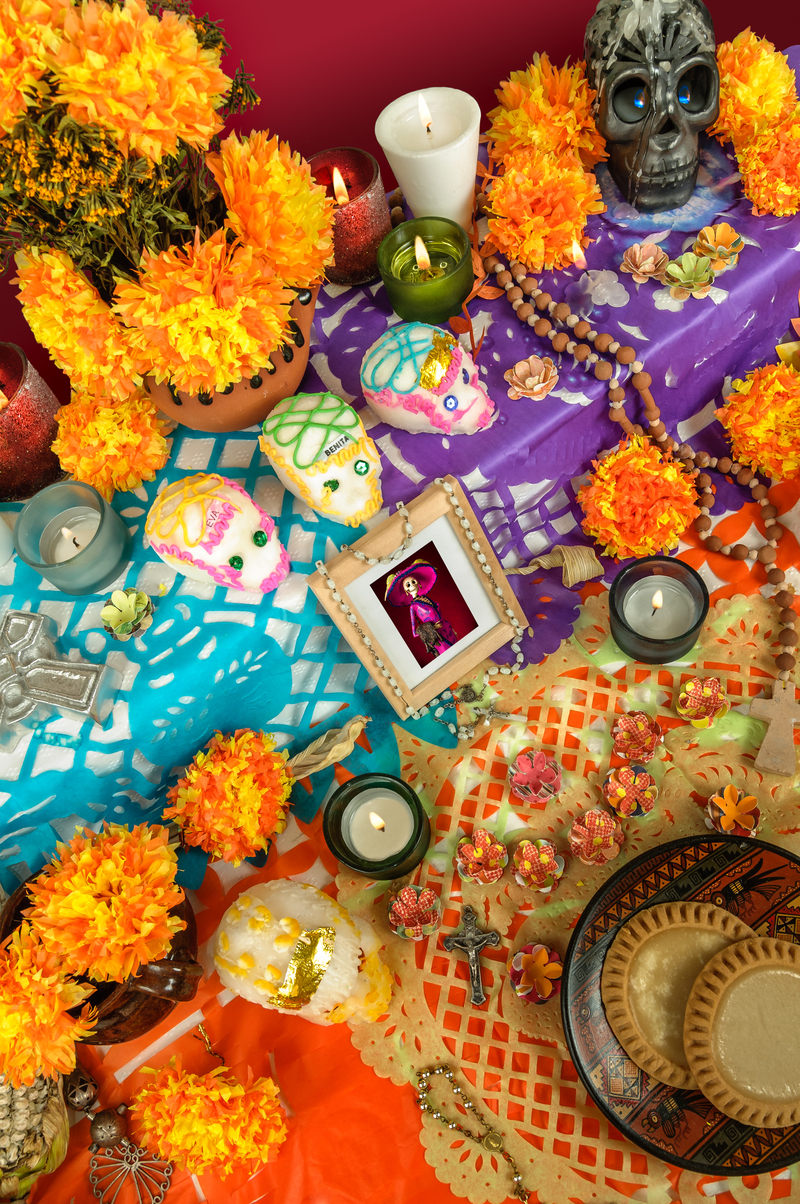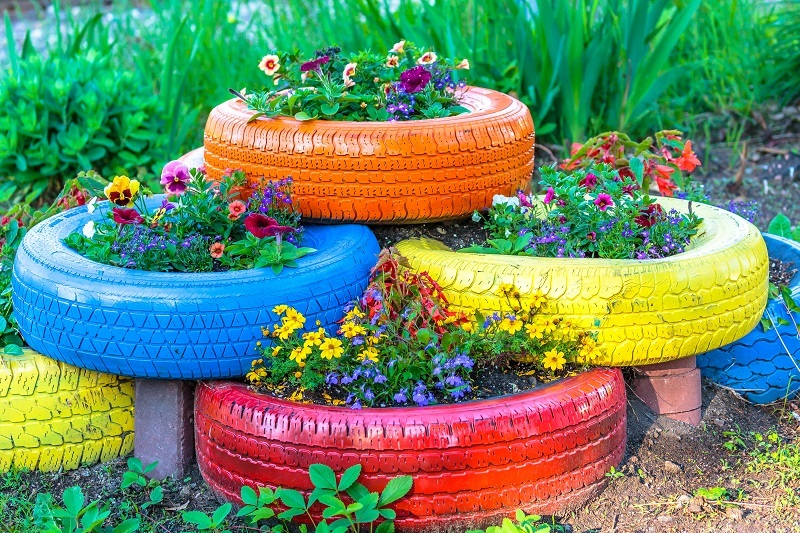Cultural Significance of Red Roses on Valentine's Day
Posted on 22/08/2025
Cultural Significance of Red Roses on Valentine's Day
Valentine's Day is celebrated across the globe as a day dedicated to love, affection, and emotional connection. Among the many traditions associated with this holiday, the act of giving red roses stands out as an iconic gesture. But have you ever wondered why red roses have become such a powerful symbol of romance during Valentine's Day? In this comprehensive article, we will delve into the cultural meaning of red roses, their deep-rooted symbolism in love, and how different civilizations have embraced these beautiful flowers as the ultimate expression of affection.

The Historical Origins of Red Roses
The Ancient World: Mythology and Symbolism
To understand the cultural importance of red roses on Valentine's Day, we must first step back in time. Red roses have been held in high regard for thousands of years. In ancient Greek and Roman mythology, the rose was closely linked to goddesses of love, such as Aphrodite and Venus. According to legend, the first red roses grew from the ground where Venus's tears and the blood of her beloved Adonis mingled.
- Greek mythology associated roses with Aphrodite, the goddess of love, who is often depicted adorned with these elegant blooms.
- Romans believed roses symbolized secrecy and confidentiality, often hanging them in rooms where important decisions or declarations of love took place.
The tradition of giving red roses stretches back centuries and has transcended cultural boundaries, evolving into the modern ritual seen on Valentine's Day.
The Middle Ages: Courtly Love and Roses
During the Middle Ages, red roses took on a new layer of symbolic meaning in the context of "courtly love." Aristocrats and poets used roses as metaphors for passion, chivalry, and secret devotion. Troubadours and writers like Geoffrey Chaucer cemented the connection between red roses and romantic love in works such as "The Romance of the Rose."
Red roses not only conveyed love but also helped lovers communicate secretly, especially in societies where overt declarations were frowned upon. This tradition of sending coded messages through flowers is part of the Victorian language of flowers that thrives to this day.
The Victorian Era: The Language of Flowers
In 19th-century England, expressing emotions in public was considered unseemly. Thus, people turned to the "floriography" or the language of flowers to signal their feelings. Within this secretive code, red roses were understood to mean deep, passionate love. During Valentine's Day and other romantic occasions, a bouquet of red roses became a clear declaration of one's heartfelt emotions without the need for words.
Red Roses and Valentine's Day: A Timeless Symbol
The Modern Valentine's Day Tradition
Red roses have become synonymous with Valentine's Day in modern culture. The combination of their rich color, velvety texture, and enchanting fragrance has made them the preferred flower for expressing love on February 14th. Each year, millions of red roses are sold globally as couples strive to express their emotions in the most romantic way.
- Florists often report that up to two-thirds of annual red rose sales occur around Valentine's Day.
- Valentine's cards and gift wrapping frequently feature red rose motifs, further embedding their association with love and romance.
Why Are Red Roses the Ultimate Love Flower?
Numerous flowers could symbolize romance, yet red roses continue to reign supreme. This is due in large part to their timeless symbolism and their ability to convey multiple meanings:
- Passion - The vibrant red color stands for deep passion and desire, making it an ideal choice for romantic occasions.
- Respect and Admiration - Red roses can signify honest admiration, appreciation, and respect for a loved one.
- Commitment - Giving red roses can imply a wish for long-term devotion and perseverance in love.
Whether it's a single rose or an elaborate bouquet, the red rose's message is always clear: I love you deeply.
Cultural Interpretations Around the World
Red Roses in Western Culture
In Europe and North America, the association of red roses with Valentine's Day is especially strong. These flowers are central to romantic celebrations:
- United States and Canada - Red roses are a must-have for Valentine's Day, and many couples regard them as a "love language" of sorts.
- United Kingdom - Similar traditions exist, with red roses often gifted alongside chocolates and cards.
- France - The French, renowned for their romantic expertise, view red roses as the ultimate romantic gesture on Valentine's Day and beyond.
Red Roses in Eastern Cultures
While the Western tradition of red roses has spread globally, different cultures interpret their meaning uniquely:
- China - Red symbolizes luck and happiness. Giving red roses is seen as a wish for prosperity and joy in a romantic relationship, especially during festivals like the Qixi Festival, sometimes called "Chinese Valentine's Day."
- Japan - Valentine's Day is celebrated by women giving men chocolates, but red roses have also become a popular token of admiration and affection.
- India - Urban areas have adopted the red rose tradition on Valentine's Day, but roses are also seen as an expression of respect and reverence in other contexts.
Thus, while the cultural meaning of red roses remains rooted in love and romance, each society adds its own nuance to the tradition.
Symbolism of Red Roses: Beyond the Obvious
Color Psychology and Emotional Impact
The vivid red of a rose is no coincidence. Across cultures, red is associated with strong emotions such as passion, excitement, and sometimes even danger. In the context of love, red conveys vitality and urgency. This is why red roses arouse such powerful feelings when exchanged on Valentine's Day.
- The brightness of red captures attention, making it a bold declaration of love.
- Red is warm and energetic, reflecting the heat and energy of passionate relationships.
- It also symbolizes courage, representing the bravery it sometimes takes to declare one's love.
When you give someone red roses, you're not just giving a pretty flower; you're sharing an unspoken, unmistakable message of heartfelt emotion.
The Language of Numbers: The Significance of Quantity
Did you know the number of red roses given also holds meaning? In the language of flowers, different quantities can communicate distinct messages:
- A single red rose expresses love at first sight, or a simple yet profound "I love you."
- Three red roses say "I love you" in a classic, balanced way.
- Dozen red roses (twelve) are the most popular: a traditional symbol of perfect love and complete devotion.
- Twenty-four red roses could mean "I'm yours" or represent a love that lasts every hour of the day.
These subtle variations add an extra layer of depth and intention to the act of giving red roses on Valentine's Day.
Red Roses in Art, Literature, and Pop Culture
Artists' Muse and Symbol of Love
Through the ages, the red rose's cultural significance has inspired some of the world's greatest works of art and literature:
- Shakespeare referenced red roses in many plays and sonnets as metaphors for beauty and love.
- Paintings by masters such as Henri Fantin-Latour and Pierre-Auguste Renoir showcase the delicate allure of red roses.
- Modern media - Red roses feature in countless movies, songs, and poetry as a visual shorthand for romance and passion.
This enduring presence in popular culture strengthens the red rose's symbolic hold over our collective imagination, especially as Valentine's Day approaches.
Red Roses: More Than Just Romance
While red roses are primarily associated with romantic love, they can also express a range of other deep emotions:
- Gratitude and admiration for friends and family members.
- Respect and honor in commemorative events or memorials.
- Jubilation and celebration in cultural festivals and significant milestones.
The beauty of the red rose lies in its versatility, making it a fitting tribute for many types of heartfelt connections.

Ethical Sourcing and Modern Trends
The Impact of Sustainability
As awareness of environmental issues grows, many consumers are seeking ethically sourced red roses. On Valentine's Day, an increasing number of florists offer roses grown under fair labor conditions and with minimal environmental impact.
- Look for certifications like Fairtrade or Rainforest Alliance when purchasing red roses.
- Consider locally grown flowers to reduce transportation impact and support local businesses.
This movement reflects a growing understanding that the cultural significance of red roses on Valentine's Day can be celebrated responsibly.
Trendy Variations and Alternatives
While red roses remain the go-to flower for Valentine's Day, some people opt for variations such as different colored roses (white, pink, or even rainbow-hued). Still, none evoke quite the same depth of romance as the classic red rose.
- Dark red roses can symbolize unconscious beauty or deep, abiding love.
- Red roses mixed with other flowers can create unique bouquets that blend romantic passion with other sentiments, such as friendship or happiness.
Conclusion: The Enduring Legacy of Red Roses on Valentine's Day
From the mythological tales of the ancients to the coded messages of the Victorians, and into modern, globalized society, the symbolism of red roses on Valentine's Day is rich, layered, and universally understood. These flowers have become a timeless emblem of love's power, beauty, and resilience. Whether you are celebrating new love, honor a lasting partnership, or expressing heartfelt appreciation, red roses remain the most evocative choice.
So, next Valentine's Day, when you give or receive a bouquet of red roses, remember you are participating in a profound tradition that transcends cultures and generations--a gesture that continues to capture the essence of love in its truest form.
Latest Posts
Step into the World of Orchid Care Guide
Cultural Significance of Red Roses on Valentine's Day
Simple Strategies to Preserve Cut Flower Beauty
Seven Hidden Gems About Tulips That Are Bound to Surprise You





